We need a better strategy for containing and checking Iran, and it is needed now, write John Allen and Michael O’Hanlon. If we are successful, Trump’s mistaken threat to blow up the Iran nuclear deal may be overtaken by events in what could become a win-win for the president as well as his critics. This post originally appeared on The National Interest.
President Donald Trump would be making a serious mistake were he to withdraw from the Joint Comprehensive Plan of Action—the 2015 nuclear deal between various world powers and Iran—in coming months. This action, which Trump has threatened if Congress does not act soon to toughen our overall Iran policy, would be a much more serious blow to American interests and to U.S. global leadership than Trump’s previous treaty-related decisions. Yes, he questioned alliances as a candidate, but he and his national-security team have recommitted to virtually all of them since January. Yes, he pulled out of the Trans-Pacific Partnership before the Senate could consider ratifying it, but Hillary Clinton had promised to do the same. Yes, he pulled the United States out of the Paris climate accord, another mistake. But that decision could be rescinded by a future American president, and the pact restored, with only limited harm done in the interim. By contrast, a unilateral abrogation of a painstakingly negotiated multilateral nuclear deal, blessed by U.N. Security Council resolution, would be a serious affront to international law, a sword in the side of the Nuclear Non-Proliferation Treaty, and a repudiation of the views of our core allies. Worse, it would probably be an irreversible decision, giving Iran carte blanche to resume many nuclear activities without constraint, and without any plausible way to restore the multilateral economic sanctions that had made Teheran cry uncle and negotiate the deal in the first place.
All that said, let’s take up Trump at his word, and address his challenge. He is far from wrong to voice serious concerns about Iran’s behavior throughout the broader Middle East. Many other Americans will reasonably wonder how we can reach an amicable agreement with Iran on nuclear matters while seemingly closing our eyes to Iran’s lethal adventurism throughout the region. The latter Iranian behavior, which is ongoing and unrelenting since the JCPOA was signed in 2015, also makes the nuclear deal’s “sunset provisions” even more troubling, since there is no sign that Iran is becoming less dangerous with time.
In fact, let’s be even more blunt and even more stark: Over the last generation, no foreign government has more American blood on its hands than Iran’s post–1979 revolutionary theocracy. It orchestrated the Marine barracks bombing in Lebanon in 1983 and the Khobar Towers bombing in Saudi Arabia in 1996. In Iraq since 2003, Iran’s Quds Force has provided weaponry to both Sunni and Shiite insurgents who have killed hundreds of Americans. Tehran’s ongoing efforts to foment trouble virtually wherever Shiites live in the Middle East—from Eastern Saudi Arabia to Iraq and Syria to Yemen and Bahrain and beyond—have worsened wars that have killed more than five hundred thousand and displaced more than 15 million since 2011. Its ongoing lethal support for Hamas and Hezbollah put Israel at constant peril.
So yes, we need a better strategy for containing and checking Iran, and it is needed now. If we are successful, Trump’s mistaken threat to blow up the JCPOA may be overtaken by events in what could become a win-win for the president as well as his critics.
First, let’s take stock of where we are today in Iran policy. The United States keeps vigilant military presence in the Persian Gulf waterways to ensure the free flow of oil, lest Iran be tempted to interfere. It collaborates with security partners of the Gulf Cooperation Council to build up their regional defenses against Iran as well. And it helps Israel stay strong and secure against possible threats from Iran’s allies Hamas and Hezbollah. All these elements of a security policy aimed at Iran are sound.
However, the United States and allies struggle on other fronts. Both President Obama and President Trump have prioritized the fight against the Islamic State in Iraq and Syria over more comprehensive efforts to stabilize the two countries. Iran has profited from the security vacuum. The Yemeni civil war is yet another humanitarian catastrophe in the Middle East. The Saudi-led Arab coalition is stuck there in a quagmire. The longer that goes on the greater the human cost that provides ongoing opportunities for not just Iran but also al-Qaida and perhaps the Islamic State. The United States must begin to assert itself with the key actors to move the peace process forward. And Washington takes too minimalist of a role in helping strengthen key countries like Jordan and Egypt, which might be vulnerable to spillover effects from the region’s wars that Iran helps stoke.
As such, a security strategy to contain and challenge Iran regionally needs to include the following elements:
- Pledge to maintain a U.S. military presence in Iraq for a longer period of time and extend the aid package for the country. Ideally, this commitment should have the support of the Gulf states and NATO allies. This type of commitment actually dovetails well with NATO’s adaptive aspirations to help stabilize fragile states in the region. Iraq has suffered a generation of war and misrule, and years of low oil prices as well. Now, with Islamic State-held cities mostly liberated, the imperative of a successful rebuilding effort that engages all three major sectarian groups and prevents a return to civil war or the arrival of an Islamic State 2.0 is acute. A stronger, more stable Iraq will be much better positioned to resist domination by Iran. Given the stakes, and America’s previous investment, aid levels comparable to those given Afghanistan or Egypt are in order. Engaging in this way can also enable the United States to help Baghdad keep an eye on the Iran-backed Shia militias as they are partially disbanded and partially worked into Iraqi Security Forces in coming months.
- On Syria, an even tougher proposition, no single strategy is in order. Still, the United States and like-minded states—as well as global-aid agencies—need to help provide security and economic assistance to regions free of Assad’s rule as well as the Islamic State. Some of these regions should be treated as temporary autonomous zones and help govern themselves as well. Additionally, more western and GCC military strength and support for moderate insurgents is needed in northwest parts of the country, such as in and around Idlib, where the Al Qaeda affiliate, formerly known as Jabhat al-Nusra, is still active. Otherwise, either the latter group or Assad’s forces backed by Russia and Iran will be the likely victor.
- Jordan, under severe threat with 1.4 million Syrian refugees enmeshed in its small population of 8 million, needs more help too. In addition to a better strategy to wind down the Syrian civil war, Jordan requires more financial support, especially for the kinds of economic development that will provide jobs to its young and reduce their receptivity to the kind of extremism that breeds terrorism, chaos and opportunities for Tehran.
To be sure, this is only a partial list. But Trump’s unwise threats to the Iran nuclear deal can nonetheless help serve a broader purpose, or at least be prevented from creating another crisis, if we turn our minds in such directions.
The Brookings Institution is committed to quality, independence, and impact.
We are supported by a diverse array of funders. In line with our values and policies, each Brookings publication represents the sole views of its author(s).
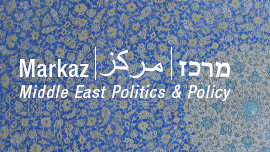
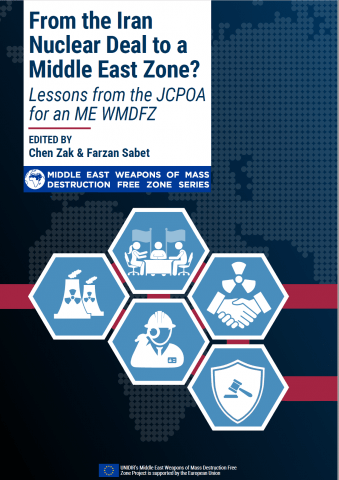

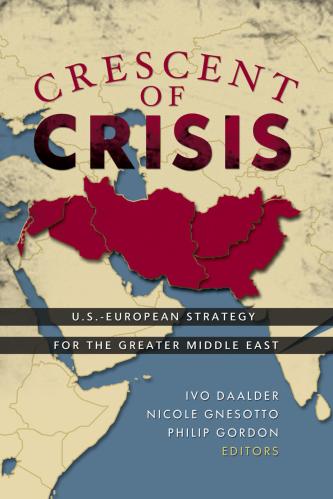
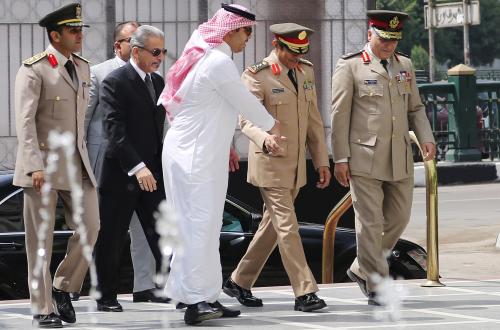
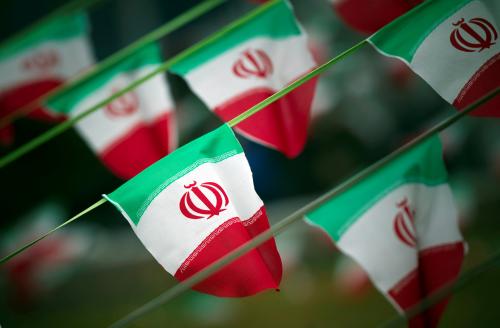
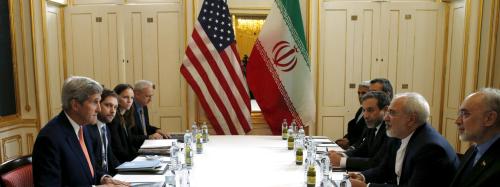


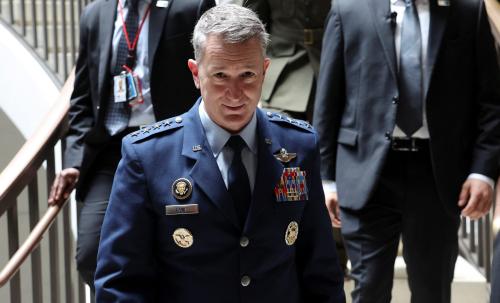


Commentary
A blueprint for minimizing Iran’s influence in the Middle East
October 23, 2017